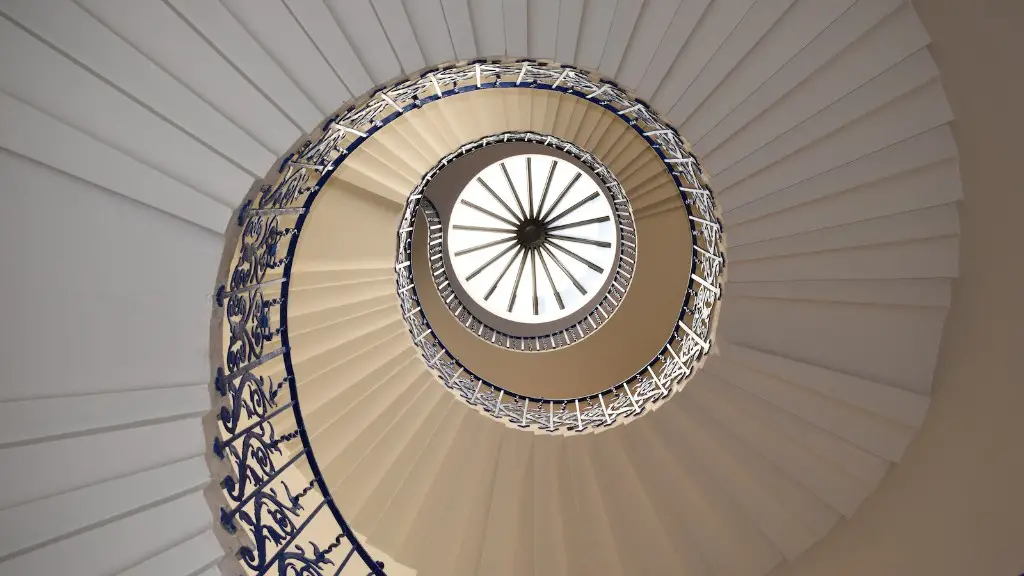Who is Filippo Brunelleschi?
Filippo Brunelleschi was a famous Italian architect who is credited with revolutionizing the Italian Renaissance architecture and art. Born in Florence in the 15th century, Brunelleschi was the first to experimentally build a self-supporting dome, paving the way for the distinctive architecture of the Italian Renaissance. He was also the first to introduce the use of perspective and geometry in architectural concepts, as well as innovative new themes, such as the use of ancient and antique motifs.
Brunelleschi’s Influential Designs
Brunelleschi’s most famous work was the construction of the famous octagonal dome of Florence’s Santa Maria del Fiore cathedral. This dome is considered one of the most iconic symbols of the Renaissance. Brunelleschi’s design for the dome was so revolutionary that it had never been attempted before. He relied on intricate mathematics and geometry to achieve the design and won over his critics by using engineering principles to construct the dome. He was also a skilled designer, and his eye for beauty and symmetry helped him to incorporate unique and innovative elements into his architecture.
Brunelleschi’s Impact on Renaissance Architecture
Brunelleschi’s work revolutionized Renaissance architecture. He was the first to introduce the use of perspective and geometry in architectural concepts, as well as innovative new themes, such as the use of ancient and antique motifs. He was also the first to experimentally build a self-supporting dome. Brunelleschi’s work had an enormous impact on the Italian Renaissance, as it introduced a new style that was unprecedented in the art and architecture of the period.
Brunelleschi’s Impact on Other Areas of Art and Design
Brunelleschi’s influence on Renaissance architecture extended beyond just the structural aspects of design. He also had a profound effect on other areas of art and design. His hierarchical designs, which incorporated both symmetry and complexity, had a lasting influence on later Renaissance artists. He was also the first to introduce the concept of linear perspective, which allowed for the accurate depiction of three-dimensional objects in two dimensional space.
Brunelleschi’s Legacy
Brunelleschi’s work had an enormous impact on the Renaissance and is still considered one of the most iconic figures in the history of Italian art and architecture. His designs revolutionized the way architects and designers approached their craft and are still seen today in the iconic cathedrals, churches, and other buildings of the Renaissance period.
Brunelleschi’s Continuation of Ancient Architectural Principles
In addition to revolutionizing Renaissance architecture, Brunelleschi was also one of the first architects to recognize the importance of adhering to ancient architectural principles. He was a skilled designer and had an excellent eye for beauty and symmetry, utilizing traditional Roman and classical design principles in his own unique creations. This helped to ensure that his creations would remain timeless and relevant, even centuries later.
Brunelleschi’s Use of Innovative Building Materials and Techniques
Brunelleschi was a highly innovative engineer, and he made use of a range of building materials and techniques that were unprecedented in the period. He was the first architect to use the marmorino technique, an innovative building process that allows for the use of light stone in place of heavy bricks. He also employed a revolutionary priming process for the masonry of the Santa Maria del Fiore dome, which ensured its durability and structural integrity.
The Emergence of Neo-Renaissance Architecture
The influence of Brunelleschi’s designs can also be seen in the emergence of Neo-Renaissance architecture in the 19th century. This style of architecture was inspired by the principles of Renaissance design and incorporated Brunelleschi’s innovative use of geometry and perspective. Many of the Neo-Renaissance buildings still standing today, such as the Palazzo Medici in Florence, are a testament to his lasting legacy.
The Influence of Brunelleschi’s Work on Contemporary Architecture
The influence of Brunelleschi’s work can still be seen in contemporary architecture. His thought-provoking designs and innovative use of geometry, perspective and materials inspired architects in the modern era, who use his ideas and principles as a cornerstone for their own projects. While Brunelleschi’s revolutionary designs are a thing of the past, his influence is still seen in the modern age.
Brunelleschi’s Influence on Artistic Principles
Brunelleschi’s influence can also be seen in the way he approached art and design. His use of mathematical calculations and advanced geometry allowed for the accurate depiction of three-dimensional objects in two dimensional space. He also employed hierarchy, symmetry and complexity in his designs. His principles of design have become integral to artistic principles, even today.
Conclusion
Filippo Brunelleschi was a highly influential Italian architect and designer, who revolutionized the art and architecture of the Renaissance period. His innovations in geometry, perspective and materials allowed him to create iconic structures that remain relevant, even centuries later. His influence on Renaissance architecture and design, as well as his impact on the principles behind modern art, are still seen today.


